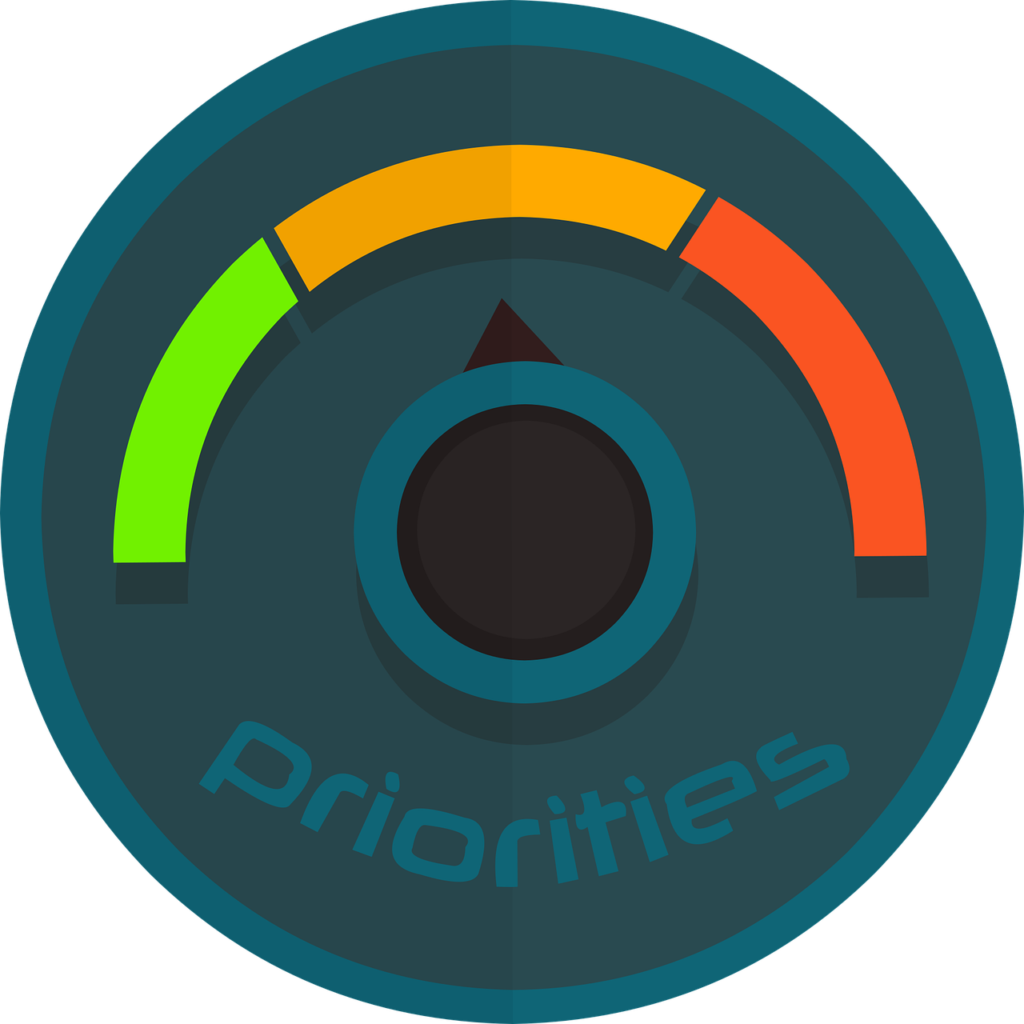
Contents
- Spending Plan Basics
- Start with a written, categorized Spending Plan
- Track and categorize spending regularly
- Clarify priorities and non-negotiables
- Base priorities on Biblical principles
- Key Goals and Guidelines
- The 10-10-80 Plan
- The 20% Housing Ratio
- A Key Skill – Managing Trade-offs
- Expense Types
- Adjusting Expenses
- Managing Trade-offs: Additional Considerations
We’ve all been there. We’ve created a Spending Plan but found that it’s not working. Maybe it didn’t balance the first time through. Or maybe it did, but we’ve found that we can’t actually live by it. Or maybe we are living by it, but we’re not moving in the direction of financial freedom. Whatever the case, it’s not working.
In this article, we’ll review some key strategies to maintain a Spending Plan that actually does lead us to financial freedom. And we’ll look at how to make trade-offs that enable us to live by the plan.
Spending Plan Basics
If the Spending Plan isn’t working, the first step is to review some basics.
1. Start with a written, categorized Spending Plan.
An effective Spending Plan must be written and it must be at the right level of detail. A hazy set of guidelines in our head won’t guide our spending the way we need it to. We need a written Spending Plan with a list of categories relevant to us. If you need help creating a Spending Plan, see our related article, How to Create a Spending Plan.
2. Track and categorize spending regularly.
The only way to tell if a Spending Plan is working is to track and categorize actual expenses and compare those to the plan month by month. It’s not sufficient to simply track account balances and verify that debt is declining and bank balances increasing. We need to record our expenses and categorize them to match up to the Spending Plan; this way, we can see where our plan may not reflect spending reality and make adjustments. If you need help with tracking and categorizing, see our related article, How to Track & Categorize Spending.
3. Clarify priorities and non-negotiables.
A Spending Plan can be balanced and workable but still not effective. This happens when the plan isn’t based on our most important priorities. If we don’t base our Spending Plan on key priorities, it becomes more an acknowledgment of what we spend than a guideline for controlling our spending. Basing the plan on our priorities and non-negotiables helps ensure that the plan points us in the financial direction we want to go. For help with determining priorities, see our related article, Spending Priorities & Non-negotiables.
4. Base priorities on Biblical principles.
As Matt Perman so aptly points out, it’s possible to base our lives on values but have the wrong values. The same is true with our finances. We can prioritize the wrong things as we define our Spending Plan and still miss out on all that God has for us even if we follow our plan. Basing our priorities on Biblical principles helps keep us on track. Of course, the Bible doesn’t give us directives like, “spend less on housing and more on education.” But we can still apply Biblical wisdom to our planning and use that wisdom to guide us in the decisions we make. For more on this see our related article, A Biblical View of Spending.
Key Goals and Guidelines

Many stewardship leaders agree on a couple of key guidelines for our Spending Plan. These aren’t hard-and-fast rules but they serve as indicators of how well our plan is moving us toward financial freedom. We’ll summarize them here, but see the linked article above for more details.
The 10-10-80 plan
The 10-10-80 plan is a guideline used by many stewardship leaders and teachers as a benchmark for a Spending Plan. To summarize, the 10-10-80 plan allocates:
- 10% of gross income for giving;
- 10% of gross income for savings (including debt retirement); and
- 80% of gross income for all other expenses (including taxes and other non-saving payroll deductions).
In the area of giving, this plan aligns with the Biblical model of the tithe. For saving, the plan incorporates Biblical wisdom regarding retiring debt and setting aside for the future. In the area of spending, the plan helps guard against materialism and consumerism by limiting what we spend on ourselves.
Of course, not everyone can get from where they are to a pattern like this overnight. The point isn’t judgment when we fall short of the guideline; the point is to provide a God-honoring pattern to aspire to.
The 20% Housing ratio
For most of us, housing is our primary cost. This means that if we’re overspending here, we have to make adjustments in other areas of our Spending Plan. High housing costs can become an obstacle for reaching the Biblical standard of the tithe or for wisely saving and retiring debt. They may also force us to underspend in other key areas.
Many stewardship leaders advocate a 20% ratio as a benchmark for housing costs. That is, no more than 20% of gross income should go to housing. In the context of the 10-10-80 plan, that means that a quarter of our spending (the 80%) would be devoted to housing. And while this may not sound like a lot, remember two things: First, this is based on gross income, not net; second, the 80% also needs to cover another major item – taxes. Many of us probably find ourselves in a position where half of our spending (the 80%) is consumed by the two areas of housing and taxes.
Also keep in mind that housing includes more than just mortgage or rent. It includes utilities and other key costs related to our dwelling and land.

A Key Skill – Managing Trade-offs
We already manage trade-offs in our finances continually, often without realizing it. A dollar can be spent any way we want to, but it can only be spent once. So if we spend it on coffee, we’re not using it to retire debt. If we spend it on a movie, we’re not adding it to savings. You get the idea.
As a result, a Spending Plan is basically a summary of trade-offs. We plan to spend a certain amount on food, a certain amount on clothes, a certain amount on housing, on entertainment, on transportation, etc. And since we have a finite income, all those amounts represent trade-offs with other categories. If we take on a new car payment, for example, that money comes from somewhere.
Trade-offs aren’t bad; they’re just a reality. And if we manage them intentionally, we can take more control of our finances and orient our spending to what really matters most to us. The place to start is to understand different types of expenses.
Expense types
Expenses can be looked at in two different pairs: Discretionary vs. non-discretionary; and fixed vs. variable.
- Discretionary expenses are those that we can choose to keep or eliminate. Entertainment is a great example: we can go to a movie, or not. We can pay for cable TV, or not.
- Non-discretionary expenses are those that we can’t do without. These include basic life necessities like housing, food, and clothes. For most of us, transportation would also be a non-discretionary expense.
- Fixed expenses are those that are the same from month to month. Examples include rent/mortgage, car payments, and insurance payments.
- Variable expenses are those that change from month to month. Utilities, food, and clothes are among our variable expenses.
As you can see, it’s possible for a Discretionary expense to also be fixed (as in monthly subscriptions) or variable (eating out or going to movies). A Non-discretionary expense can also be fixed (rent/mortgage) or variable (food, clothes).
Here are a few examples summarized in a grid:
| Fixed | Variable | |
| Non-discretionary | Mortgage/Rent Taxes Car Payment | Clothing Groceries Gas/Transportation |
| Discretionary | Memberships & Subscriptions Cable/Satellite TV | Eating Out Events, movies, etc. Vacations |
Adjusting Expenses
Identifying trade-offs to make our Spending Plan work begins with pinpointing expenses that we can eliminate or reduce. Some expenses are easier to adjust than others, so here’s a recommended order of consideration, from easiest adjustments to hardest.
Discretionary/Variable expenses
We can usually eliminate discretionary/variable expenses most easily. Because they’re discretionary, we don’t have to have them; and because they’re variable, we can simply choose not to spend in those areas. Entertainment and some household expenses fall into this slot.
Discretionary/Fixed expenses
Discretionary expenses that are also fixed are the next easiest target. Although they can be eliminated (because they’re discretionary), doing so usually requires us to take an action (like canceling a subscription or membership). This takes a little more work than eliminating discretionary/variable expenses but can often produce more lasting results (although prying the sports nut away from his cable TV may prove difficult!).
Non-Discretionary/Variable expenses
Required expenses can be addressed in a couple of ways. Though they can’t be eliminated, they might be able to be reduced or postponed. So, for example, the food budget might be reduced by spending less on junk food or buying cheaper brands. The clothes budget might be reduced temporarily by putting off some clothing purchases if they’re not urgent. Some of these adjustments can be made permanently, while others may be more temporary to provide relief over a defined period of time.
Non-Discretionary/Fixed expenses
The hardest expenses to adjust are the required expenses that are also fixed, like house payments and car payments. So these would often be the last places to look in order to update the Spending Plan. But they’re also often the most impactful expenses because they’re the largest. Adjustments here – like selling an expensive car and buying a less expensive one or selling the house and moving – can make the biggest long-term impact if these expenses are overwhelming the Spending Plan.
Managing Trade-offs: Additional Considerations

Of course, adjusting the Spending Plan isn’t purely a matter of arithmetic – moving money from one expense area to another. If your spending plan isn’t leading you to financial freedom, here are some additional considerations to include as you weigh alternative trade-offs.
Non-financial considerations
Many financial decisions are impacted by non-financial considerations. For example, the choice of where to live – which has major financial impact – is affected by family considerations such as quality of the school system and job opportunities.
This goes back to the earlier discussion about priorities and non-negotiables. Often, if we’re “stuck” in making decisions regarding trade-offs, revisiting our non-negotiables and other priorities will help clarify those decisions. This is especially true for couples (where each person may have different assumptions underlying their finances) but also applies to individuals.
Earning
If the 10-10-80 plan seems wildly unattainable or your housing ratio is way out of line and moving isn’t an option, increasing earning may be the best solution. This can mean having a spouse work or taking a second job or working more hours. Obviously, there is additional stress associated with these options, so this may need to be a temporary solution. And if overspending is being caused by consumerism, more earning won’t solve that problem.
Increasing earning is another trade-off. You’re trading time for money. Maybe you’re trading opportunities such as home-schooling in order for a spouse to work. These are important decisions and shouldn’t be taken lightly. But they may be necessary, at least in the short term, in order to achieve a workable spending plan.
Selling Assets
Another possible consideration is selling some assets. This is a one-time solution; an asset can be sold only once. So it won’t solve a long-term problem or an ongoing overspending problem. But selling assets can generate income to pay off a lingering debt that’s keeping the Spending Plan from balancing.
The Reward of Discipline
No discipline seems pleasant at the time, but painful. Later on, however, it produces a harvest of righteousness and peace for those who have been trained by it.
Hebrews 12:11
Ideally, we’d create a Spending Plan that would satisfy all our needs and wants, that would balance, that would be attainable month by month, and that would move us consistently in the direction of financial freedom and Biblical stewardship. In practice, it rarely (if ever) works out that way.
Making trade-offs isn’t fun. We prefer “and” to “or”. But “and” often leads us astray, satisfying our materialistic wants while resulting in a spiral of debt. “And” teaches us not to be content, but to always reach for more. “And” keeps us from gratitude and from recognizing our role as stewards rather than owners.
Making trade-offs requires hard choices and discipline. But the fruit is worth it. The right trade-offs bear fruit in our spiritual lives, in both financial and non-financial ways.
Related Articles